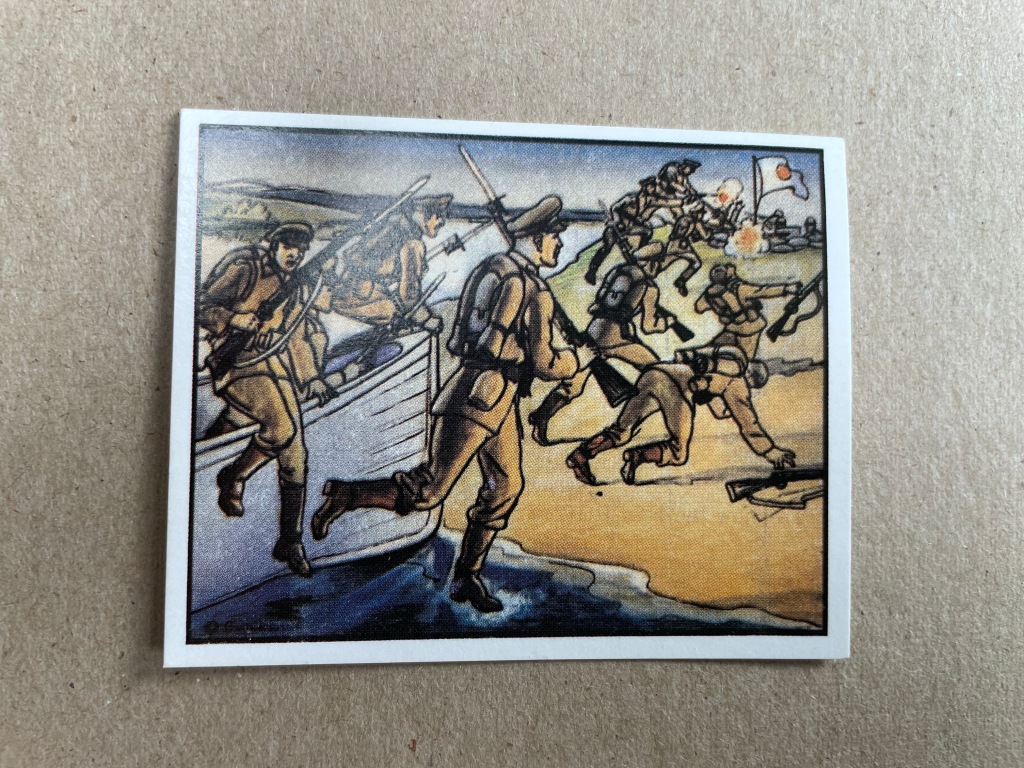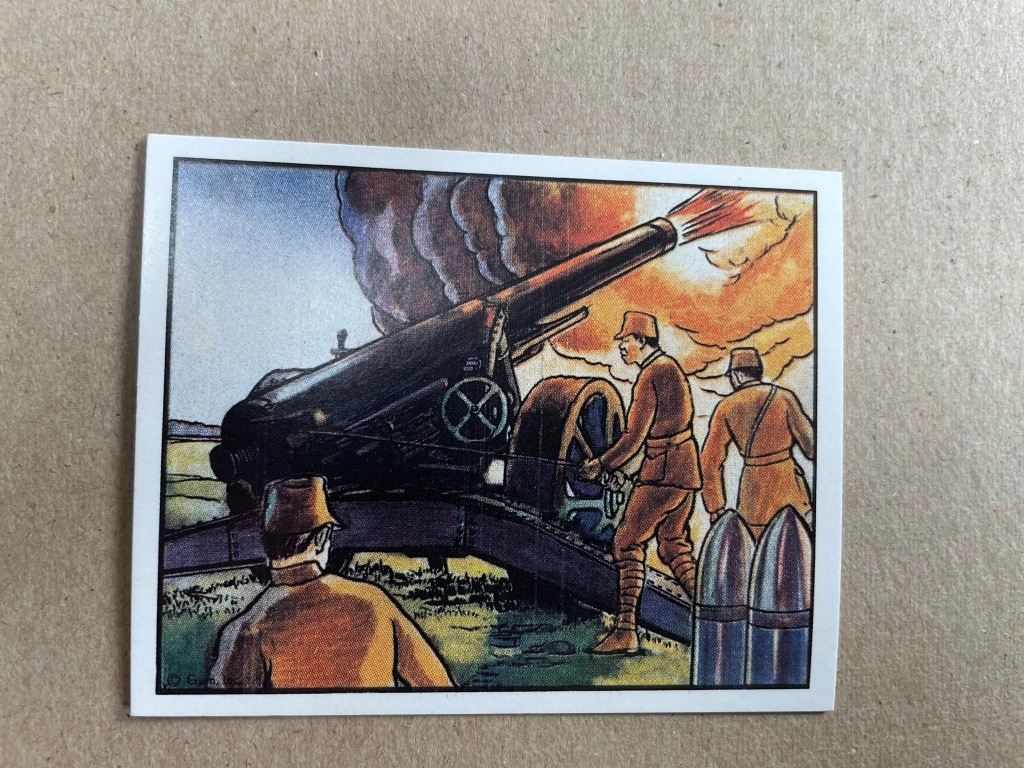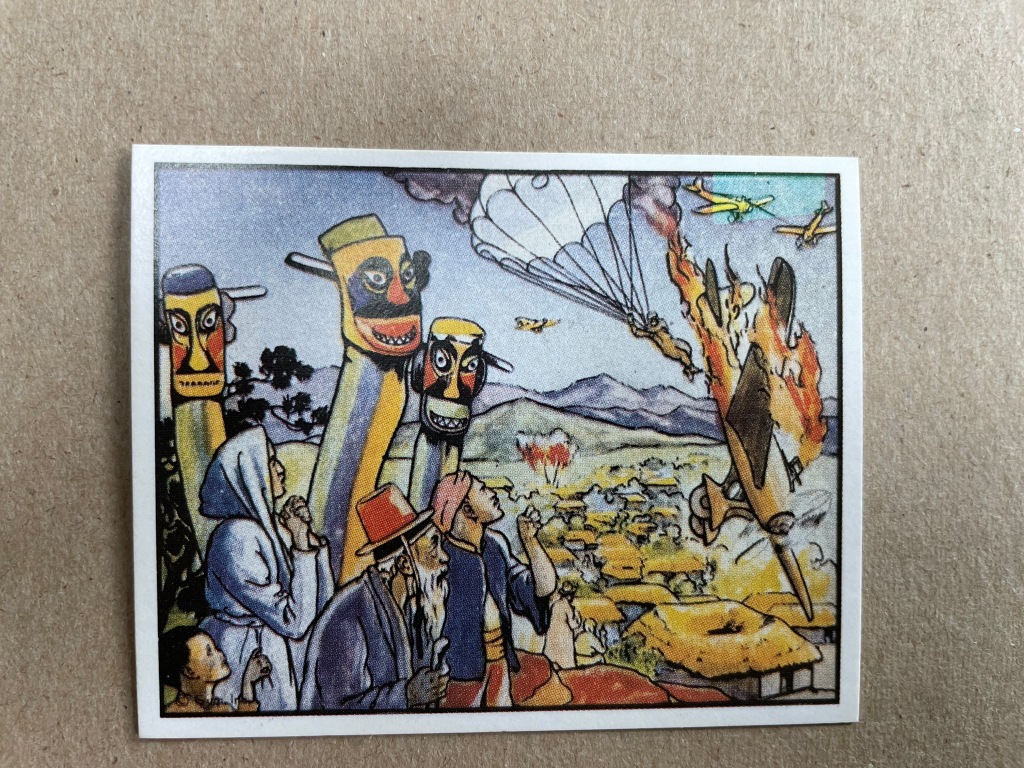I recently picked up quite a few, Second Series, Horrors of War cards for $15.00 at a flea market. They are all reprints from 1984.
I had never heard of the set but a little research shows that the set was originally produced in 1938 by Gum, INC. Apparently, the original cards are much sought after and demand high prices especially as a set.
The Card Board Connection tells the story of the set, so I will just sum it up here.
For most Americans, World War Two began on December 7th, 1941 when the Japanese bombed Pearl Harbor in Hawaii in a surprise attack. In reality the war started when Germany invaded Poland in September of 1939, but that ignores the wars of the 1930’s that led up to the world wide conflict that began in 1939.
The Horrors of War collection documents with beautiful and sometimes gruesome artwork, The Spanish Civil War, The Japanese Chinese War, The Ethiopian War (Italy invaded Ethiopia), The Russian Japanese War of 1939 as well as Nazi Germany’s conquest of the Sudetenland (1936).
According to the Card Board Connection the complete set includes 288 cards. Forty-eight cards of the 288 were added as a supplement. I have the entire 48 card reprint supplement. The supplement includes all of the wars mentioned above with the exception of the Ethiopian War.
Few Americans today remember that Russia and Japan fought an undeclared war in Manchuria in 1939. The Soviets would win that conflict at the Battles around Khalkin Gol under the the leadership of future Marshal Zhukov who would go on to defeat the Nazi’s after Germany invaded the Soviet Union in June of 1941.
My card set features 13 cards (card numbers #241-#254 of the undeclared war between the Soviet Union and Japan..














The cards are copyrighted in 1938 but the incidents documented in this subset occurred in 1939. Card #254 documents the armistice that occurred after the Battles of Khalkin Gol in August 1939.
The stories on the back of the cards are interesting, sometimes hard to believe and reflect a bit of the racism of the times especially regarding the Japanese and Koreans.
Nevertheless, the cards are a fascinating snapshot of pre-WW2 conflict. According to the Card Board Connection then President Roosevelt endorsed the card set. He wanted to show a reluctant America that WW1 did not settle anything and that the world was still a very dangerous place. Documenting the activities of dictators was a good way to show that eventually the United States may have to get more involved despite the isolationism of the time.